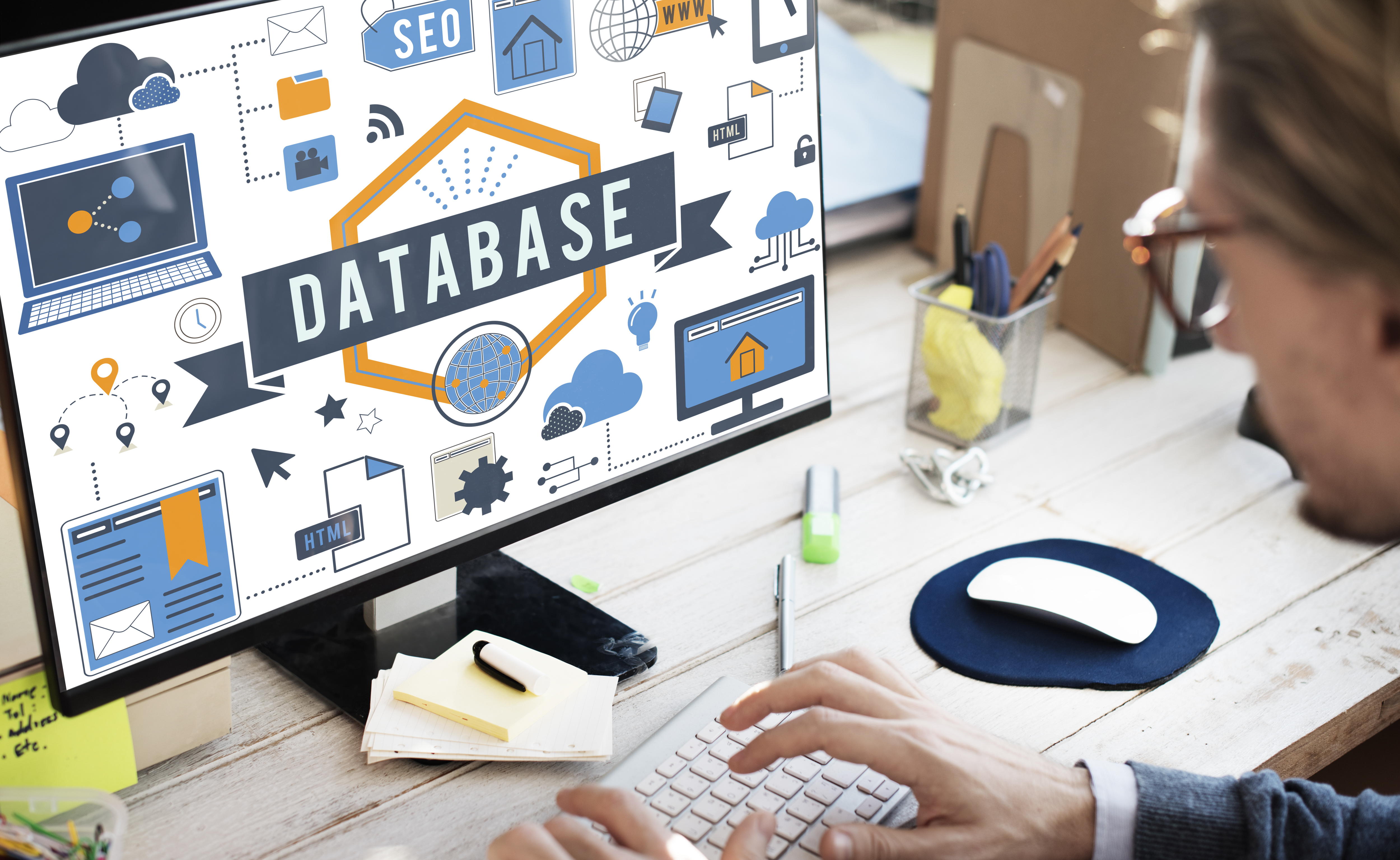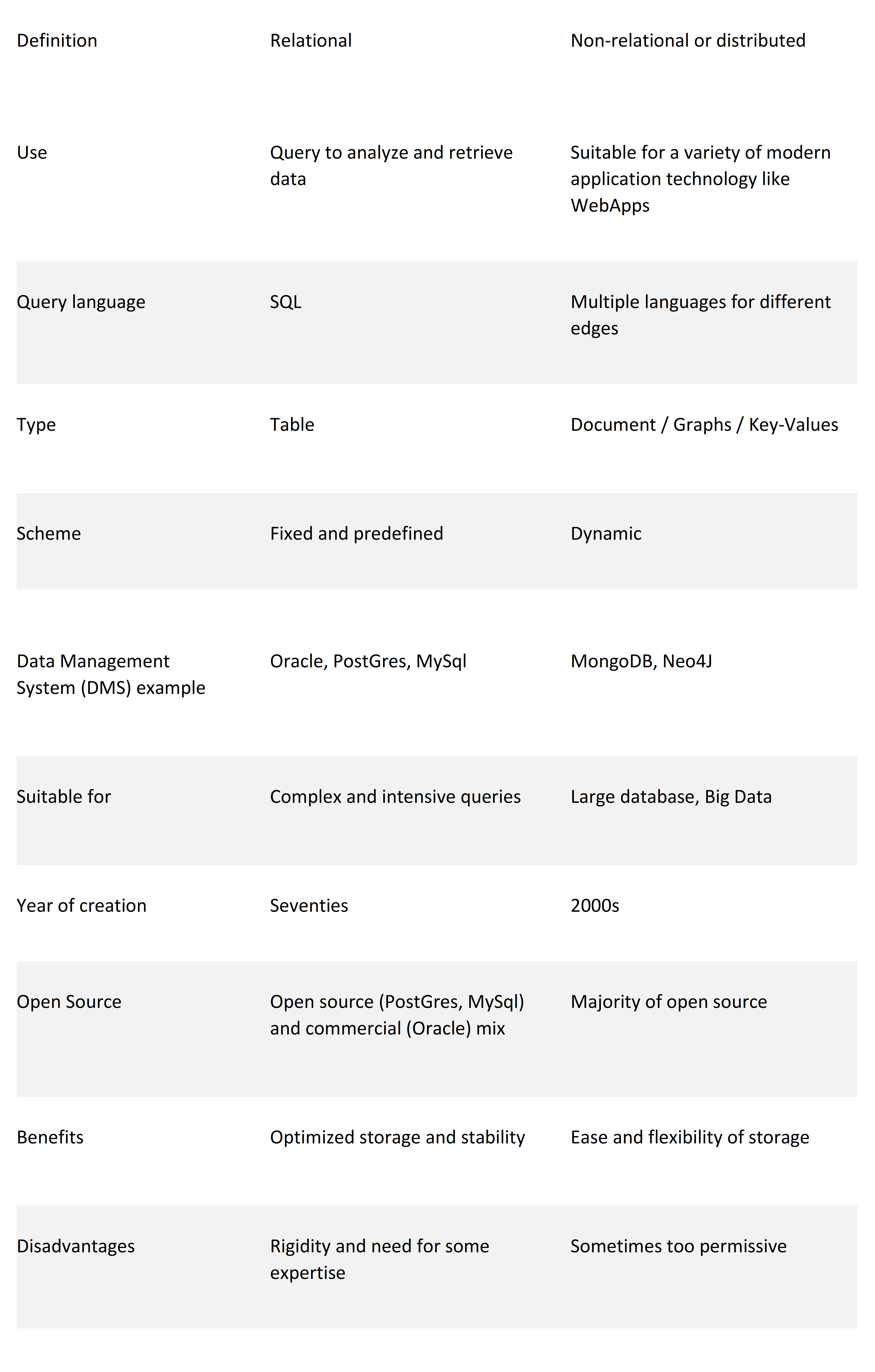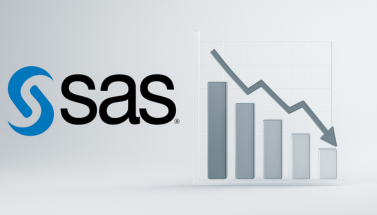
- by Team Handson
- September 20, 2022
SQL vs NoSQL: Differences, Uses, advantages and disadvantages:
To do the work that Data Analysts, Data Scientists and Data Engineers do, require data. Thus, Database management is the foundation stone of all work in this arena. A database management system (DBMS) is software that permits one or more operators to take admission in a database. It is he who manages differentiated access (identification, security) and who interprets requests to ingest, modify, return or delete data. There are two core types of DBMS: SQL DBMS and NoSQL DBMS. In order to understand which technology to choose, we will see what these two DBMS are and what their differences are.
What is an SQL Database?
SQL databases (Structured Query Language) are called relational databases too. They consist of a set of tables in which the data is classified by category.
Each of the columns of the tables parallels to one of these categories and consist of a confident quantity of data from this category. These tables usually have a static schema, i.e. the shape of the tables is defined (number of columns, titles, type of data and possibly other constraints). here is an example
|
UserID |
FirstName |
LastName |
City of Residence |
|
555 |
Harry |
Hoven |
Mexico |
|
777 |
Julia |
Stamen |
Berlin |
|
999 |
Emily |
Rosena |
Madrid |
We have spotted that each column parallels to a definite type and that the columns have a precise type (Number, text, etc.)
This table is related with one more table covering other data, for example the following:
|
City |
Age |
Gender |
|
Mexico |
25 |
M |
|
Berlin |
27 |
F |
|
Madrid |
30 |
F |
As you can see, the two tables are linked by the “City of Residence” column which corresponds to the “City” column, this is called a foreign key. This key makes it conceivable to linkage the data in a intelligible way.
In order to understand more in depth, the operation and use of SQL, you can read the article “All about SQL” from our blog and use the SQL cheat sheet there!
These relational databases have been in use since their inception at IBM in the 1970s and are the most common, known and, to some extent, the easiest to use.
What is a NoSQL Database?
NoSQL databases are, as the name proposes, the reverse of SQL i.e. they are non-relational. These databases do not need a static schema and are effortlessly scalable. There are numerous types that can be modified to several data formats, for example documents, graphics or formats with keys. The aim is to be capable to recover the data in the same place without having to go through relations among arrays.
Let's take the previous example with a document format, most often it is a JSON object that is used (type of document). In this case, each of the attributes in the SQL columns is a field, and the details of a person's record would be the data values ​​associated with each field:
UserId: “555”, First name: “Harry”, Last name: “Hoven”, City of residence: “Mexico”, Age: “25” , Gender: “M”
Each type of NoSQL database is designed according to a specific situation and the technical constraints respectively justify a particular structure.
NoSQL databases were grown in the late 2000s and rapidly became widespread, thanks to their capability to be able to large distributed Big Data databases.
Become a database expert
Table of differences between SQL and NoSQL


SQL and NoSQL: which technology to choose?
Both technologies have the same objective of storage data, but do so in very diverse ways as we have seen. We will now see how to know which one to choose for your projects.
Choose SQL: Need a structured and segmented database (the essence of relational databases) Type and validity of data very important Recurring need to write and modify data on specific items (SQL makes it easy to modify specific rows) Need complex query
Choose NoSql: Database without specific schema (A non-fixed structure for example) Need many read requests, indeed all the necessary data can be retrieved at once without any particular join Large datasets (Big Data), Distributed data (multiple sources)
Conclusion
SQL and NoSQL are therefore two DMSs, i.e. two technologies that have the same purpose: to store data and provide the tools to read and manipulate this data.
Selecting the most appropriate database is a very vital step because the database is the working base of all data jobs, however this duty is not easy and the response is not always obvious even for experts. Today we saw that the first step can be to choose between a relational (SQL) or non-relational (NoSQL) database.
If you want to know more about these technologies and what they allow you to do, do not hesitate to contact us to join our training courses!






